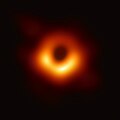
Size of this preview: 800 × 466 pixels. Other resolutions: 320 × 186 pixels | 640 × 373 pixels | 1,024 × 597 pixels | 1,280 × 746 pixels | 2,560 × 1,491 pixels | 7,416 × 4,320 pixels.
Original file (7,416 × 4,320 pixels, file size: 2.39 MB, MIME type: image/jpeg)
File history
Click on a date/time to view the file as it appeared at that time.
| Date/Time | Thumbnail | Dimensions | User | Comment | |
|---|---|---|---|---|---|
| current | 19:58, 17 April 2019 |  | 7,416 × 4,320 (2.39 MB) | Colin | Taken from https://www.eso.org/public/archives/images/original/eso1907a.tif 16-bit original. Converted to 8-bit with dithering using Photoshop 2019. Saved as JPG with maximum level 12 quality. This file is smaller than previous one because the previous one had noise or extreme dithering which does not compress well. |
| 18:19, 13 April 2019 |  | 7,416 × 4,320 (10.49 MB) | Colin | Save from tiff at maximum quality 12 from Photoshop 2019 (previous had approx 10 which produced some block artefacts visible at high magnification). Source TIF image has some random noise which is likely inherent in the production and requires minimal compression to reproduce faithfully in JPG. First version uploaded was likely smoothed. | |
| 14:06, 12 April 2019 |  | 7,416 × 4,320 (2.28 MB) | Yann | original from source: https://cdn.eso.org/images/large/eso1907a.jpg | |
| 10:31, 11 April 2019 |  | 4,000 × 2,330 (844 KB) | Multichill | Commons:Overwriting existing files: Please upload under a different filename | |
| 07:48, 11 April 2019 |  | 2,392 × 2,326 (182 KB) | Nixinova | Crop to 1:1 | |
| 13:43, 10 April 2019 |  | 4,000 × 2,330 (844 KB) | Theklan | User created page with UploadWizard |
File usage
The following pages on the English Wikipedia use this file (pages on other projects are not listed):
- 138P/Shoemaker–Levy
- 163P/NEAT
- 168P/Hergenrother
- 171P/Spahr
- 2016 AZ8
- 2018 XB4
- 2019 AQ3
- 2019 BE5
- 2019 MO
- 2019 OK
- 2019 OU1
- 2019 PG1
- 2019 SU3
- 2019 TA7
- 2019 UN13
- 2019 in spaceflight
- 2020 in spaceflight
- 289P/Blanpain
- 2I/Borisov
- 486958 Arrokoth
- 66391 Moshup
- 78P/Gehrels
- ASASSN-19bt
- AT2019qiz
- Beresheet
- C/2018 Y1 (Iwamoto)
- Chandrayaan-2
- Chang'e 4
- EPIC 204376071
- GRB 190114C
- GW190412
- GW190521
- GW190814
- Gliese 357 d
- Hayabusa2
- Interstellar (film)
- K2-18b
- K2-288Bb
- Kamchatka meteor
- Katie Bouman
- L 98-59
- L 98-59 b
- LightSail
- List of asteroid close approaches to Earth in 2019
- List of exoplanets discovered in 2019
- List of novae in 2019
- Messier 87
- New Horizons
- PSR J0740+6620
- Proxima Centauri c
- QSO J0439+1634
- Qatar-8
- RAPIS-1
- S5-HVS1
- Spring Triangle
- Supermassive black hole
- TOI-677 b
- Tau Ceti
- Teegarden's Star b
- Teegarden's Star c
- WD 0145+234
- WD J0914+1914
- Yutu-2
Global file usage
The following other wikis use this file:
- Usage on af.wikipedia.org
- Usage on an.wikipedia.org
- Usage on ar.wikipedia.org
- ثقب أسود
- علم
- ثقب أسود فائق
- ويكيبيديا:صور مختارة/الفضاء والكون/نظرة إلى الأعلى
- بوابة:علم الفلك/صورة مختارة
- كاثي بومان
- ويكيبيديا:ترشيحات الصور المختارة/أول صورة لثقب أسود
- قائمة الصور الأيقونية
- ويكيبيديا:صورة اليوم المختارة/مايو 2019
- قالب:صورة اليوم المختارة/2019-05-12
- بوابة:علم الفلك/صورة مختارة/72
- قائمة أقرب الثقوب السوداء
- ويكيبيديا:صورة اليوم المختارة/يونيو 2020
- قالب:صورة اليوم المختارة/2020-06-02
- الجدول الزمني لاكتشافات الفيزياء الأساسية
- ويكيبيديا:صورة اليوم المختارة/مايو 2023
- قالب:صورة اليوم المختارة/2023-05-24
- Usage on ary.wikipedia.org
- Usage on arz.wikipedia.org
- Usage on as.wikipedia.org
- Usage on bg.wikipedia.org
- Usage on bh.wikipedia.org
- Usage on bjn.wikipedia.org
- Usage on bn.wikipedia.org
- Usage on bo.wikipedia.org
- Usage on bs.wiktionary.org
- Usage on ca.wikipedia.org
- Usage on da.wikipedia.org
- Usage on de.wikipedia.org
- Usage on el.wikipedia.org
- Usage on eml.wikipedia.org
View more global usage of this file.







